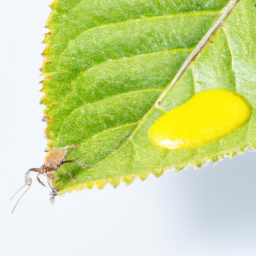
Have you ever noticed strange spots on your plants or seen tiny insects crawling around them? If so, you’re likely dealing with plant pests. Understanding plant pests and knowing how to prevent and treat them is essential for maintaining a healthy and thriving garden. In this blog post, we will explore the world of plant pests and provide you with valuable insights on prevention and treatment. So, let’s dive in and learn more about understanding plant pests: prevention and treatment.
Identifying Common Plant Pests: A Guide for Gardeners
Gardening can be a fulfilling and rewarding hobby, but it’s not without its challenges. One of the most common hurdles that gardeners face is dealing with plant pests. These tiny invaders can wreak havoc on your beloved plants if left unchecked. In this guide, we will explore how to identify common plant pests and provide you with effective prevention and treatment methods.
1. Aphids
Aphids are tiny insects that can be found on the leaves and stems of plants. They are usually green or brown in color and have soft bodies. These pests feed on the sap of plants, which can cause stunted growth and yellowing leaves. To identify aphids, look for clusters of small insects on your plants and check for sticky residue left behind.
To prevent aphid infestations, encourage natural predators like ladybugs and lacewings to visit your garden. You can also use insecticidal soap or neem oil to control aphids. Regularly inspect your plants and remove any heavily infested areas to prevent the spread of these pests.
If you notice an aphid infestation, you can try spraying a mixture of water and dish soap directly on the affected plants. This solution will suffocate the aphids and help control their population. However, be sure to test this solution on a small area of your plant first to ensure it doesn’t cause any damage.
2. Spider Mites
Spider mites are tiny arachnids that can be difficult to spot with the naked eye. They are usually red or yellow in color and can be found on the undersides of leaves. Spider mites feed on plant sap, causing leaves to turn yellow and develop a stippled appearance. They also produce fine webbing, which is a telltale sign of their presence.
To prevent spider mite infestations, regularly mist your plants with water to increase humidity and discourage these pests. You can also introduce predatory mites or insects like ladybugs to control their population. If the infestation is severe, consider using insecticidal soap or horticultural oil to eradicate spider mites.
If you suspect a spider mite infestation, gently tap an affected leaf over a white piece of paper. If you see tiny specks moving around, you likely have spider mites. Immediately isolate the infested plant to prevent the mites from spreading to other plants.
3. Whiteflies
Whiteflies are small, winged insects that can be found on the undersides of leaves. They are usually white or yellow in color and resemble tiny moths. These pests feed on plant sap, causing leaves to turn yellow, wilt, and eventually die. Whiteflies also excrete a sticky substance called honeydew, which can attract ants and promote the growth of black sooty mold.
To prevent whitefly infestations, regularly inspect your plants and remove any affected leaves. You can also introduce natural predators like parasitic wasps or use yellow sticky traps to catch adult whiteflies. In severe cases, consider using insecticidal soap or neem oil to control their population.
If you notice whiteflies on your plants, gently shake the foliage or use a handheld vacuum to remove them. Be sure to dispose of the collected insects properly to prevent reinfestation.
By being able to identify common plant pests and understanding effective prevention and treatment methods, you can protect your garden from these nuisances. Regular monitoring, maintaining a healthy garden environment, and implementing appropriate control measures will help keep your plants thriving and pest-free. Happy gardening!
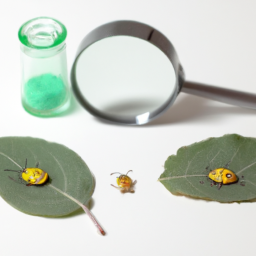
Effective Prevention Strategies for Plant Pests in Your Garden
Welcome to our comprehensive guide on understanding plant pests and how to effectively prevent them in your garden. As an expert in this field, I will provide you with valuable insights and step-by-step strategies to ensure your plants remain healthy and pest-free.
Understanding Plant Pests
Before diving into prevention strategies, it’s essential to have a clear understanding of what plant pests are and the potential damage they can cause. Plant pests can be insects, fungi, bacteria, viruses, or even small animals that feed on plants, causing harm and reducing their vitality.
These pests can invade your garden in various ways, including through contaminated soil, infected plants, or even by hitching a ride on your clothing or gardening tools. It’s crucial to identify and address pest problems promptly to prevent the infestation from spreading and causing irreversible damage.
Now, let’s explore effective prevention strategies that will help you maintain a healthy and thriving garden.
1. Implement Proper Plant Selection and Placement
One of the first steps in preventing plant pests is to choose the right plants for your garden and place them strategically. Different plants have varying levels of resistance to pests, so selecting pest-resistant varieties can significantly reduce the risk of infestation.
Consider the specific conditions of your garden, such as sunlight exposure, soil type, and drainage, when choosing plants. By providing optimal growing conditions, you enhance the plant’s natural defense mechanisms, making them less susceptible to pests.
Additionally, proper plant placement can play a crucial role in pest prevention. Grouping plants with similar needs together can create a more favorable environment and make it easier to monitor and control potential pest issues.
2. Maintain Proper Garden Hygiene
A clean and well-maintained garden is less likely to attract pests. Regularly remove any dead or decaying plant material, as they can serve as breeding grounds for pests. Fallen leaves, weeds, and other debris should be promptly cleared to minimize hiding places for pests.
Pruning is another important aspect of garden hygiene. Remove any dead or damaged branches, as they can become entry points for pests. Proper pruning techniques also promote healthy plant growth and improve air circulation, reducing the risk of fungal diseases.
Remember to clean your gardening tools regularly to prevent the spread of pests and diseases. Disinfecting tools with a solution of bleach and water can effectively kill any pathogens that might be present.
3. Implement Natural Pest Control Methods
Using natural pest control methods is not only environmentally friendly but also effective in preventing and treating plant pests. Here are some natural strategies you can implement:
Companion Planting: Certain plants, when grown together, can repel pests or attract beneficial insects that prey on pests. For example, planting marigolds alongside tomatoes can deter aphids.
Biological Control: Introduce beneficial insects, such as ladybugs or praying mantises, to your garden. These predators feed on common pests and help keep their populations in check.
Organic Sprays: Homemade sprays made from natural ingredients like neem oil, garlic, or soap can be effective in controlling pests. Be sure to follow the instructions and apply them sparingly to avoid harming beneficial insects.
Remember that prevention is key when it comes to plant pests. Regularly inspect your plants for any signs of infestation, such as wilting leaves, holes, or discoloration. Early detection allows for prompt treatment and minimizes the risk of extensive damage.
By implementing these effective prevention strategies, you can create a healthy and thriving garden that is less susceptible to plant pests. Remember to stay vigilant and take immediate action at the first sign of trouble. Happy gardening!
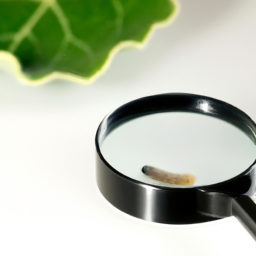
Understanding Plant Pests: Prevention and Treatment
Plant pests can cause significant damage to our gardens and crops, leading to reduced yields and unhealthy plants. While chemical pesticides are commonly used for pest control, natural and organic treatments offer an effective and environmentally friendly alternative. In this article, we will explore various natural and organic methods to control plant pests and keep your plants healthy.
1. Beneficial Insects
One of the most effective ways to control plant pests naturally is by introducing beneficial insects into your garden. These insects prey on the pests, keeping their populations in check. Ladybugs, lacewings, and parasitic wasps are some common beneficial insects that can help control aphids, mealybugs, and other pests.
Attracting beneficial insects can be done by planting flowers that provide nectar and pollen, such as marigolds, daisies, and sunflowers. Additionally, avoiding the use of broad-spectrum insecticides will ensure that the beneficial insects are not harmed.
It’s important to note that introducing beneficial insects may take some time for them to establish a population in your garden. However, once established, they can provide long-term pest control.
2. Neem Oil
Neem oil is a natural pesticide derived from the seeds of the neem tree. It is effective against a wide range of pests, including aphids, whiteflies, and spider mites. Neem oil works by disrupting the feeding and reproductive systems of the pests, ultimately leading to their demise.
To use neem oil, mix it with water according to the instructions on the product label and spray it onto the affected plants. It’s important to apply the oil evenly, covering both the upper and lower surfaces of the leaves. Repeat the application every 7-14 days or as needed.
Neem oil is safe to use on most plants, but it’s always a good idea to test it on a small area first to ensure there are no adverse effects. Avoid using neem oil during hot weather or when the plants are under stress, as it may cause leaf burn.
3. Companion Planting
Companion planting involves growing certain plants together to enhance pest control. Some plants naturally repel pests or attract beneficial insects, making them excellent companions for your vulnerable plants.
For example, planting marigolds near your tomatoes can help repel nematodes, aphids, and whiteflies. Similarly, growing basil alongside your peppers can deter aphids and spider mites. Research which plants have natural pest-repelling properties and strategically incorporate them into your garden.
Companion planting not only helps control pests but also promotes biodiversity in your garden, creating a more balanced ecosystem.
By utilizing these natural and organic treatments, you can effectively control plant pests while minimizing the use of harmful chemicals. Remember to regularly monitor your plants for signs of pests and take action promptly to prevent infestations. With a little patience and care, you can maintain a healthy and thriving garden.
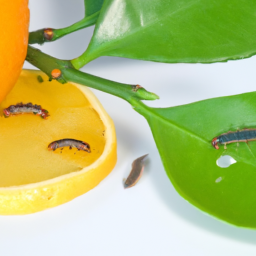
Understanding the Life Cycle of Plant Pests: Key to Effective Treatment
When it comes to effectively treating plant pests, understanding their life cycle is crucial. By gaining insight into the stages of their development, you can implement preventive measures and targeted treatments at the right time. In this article, we will delve into the life cycle of plant pests and explore key strategies for prevention and treatment.
1. Egg Stage
The life cycle of plant pests typically begins with the egg stage. Pests lay eggs on or near plants, providing a suitable environment for their offspring to thrive. These eggs can be found on leaves, stems, or even in the soil surrounding the plants. It is important to identify and remove these eggs early on to prevent infestations.
One effective way to remove eggs is through manual inspection. Carefully examine the leaves and other parts of your plants, looking for clusters of tiny eggs or any signs of discoloration. If you spot any, gently remove them using your fingers or a soft brush. Remember to dispose of the eggs properly, away from your plants.
Additionally, you can use organic insecticides specifically designed to target pest eggs. These products are safe for plants and the environment while effectively eliminating eggs. Follow the instructions provided by the manufacturer for optimal results.
2. Larval Stage
After the eggs hatch, the pests enter the larval stage. Larvae are often the most destructive phase of the life cycle, as they feed voraciously on plant tissues. Identifying and treating larvae promptly is essential to prevent extensive damage.
One common method to control larvae is through the use of biological agents, such as beneficial insects. Ladybugs, lacewings, and parasitic wasps are natural predators that feed on pests in their larval stage. Introducing these beneficial insects into your garden can help keep pest populations in check.
If the infestation is severe, you may need to resort to chemical treatments. However, it is crucial to choose insecticides that specifically target larvae and are safe for plants, humans, and beneficial insects. Always read and follow the instructions on the label before applying any chemical treatments.
3. Pupal Stage
Following the larval stage, pests enter the pupal stage, where they undergo metamorphosis and transform into adults. During this stage, pests are less mobile and more vulnerable to treatments. Targeting pupae can significantly reduce the population of pests in your garden.
One effective method to control pupae is by disrupting their life cycle through the use of insect growth regulators (IGRs). IGRs interfere with the development of pests, preventing them from reaching maturity and reproducing. These products are safe for plants and have minimal impact on beneficial insects.
Another approach is the use of physical barriers, such as nets or row covers, to prevent adult pests from laying eggs near your plants. By blocking their access, you can significantly reduce the number of pests in your garden and minimize the need for chemical treatments.
Conclusion
Understanding the life cycle of plant pests is essential for effective prevention and treatment. By identifying and targeting each stage of their development, you can minimize the damage caused by pests and maintain healthy plants in your garden. Remember to regularly inspect your plants, use organic and targeted treatments, and consider the use of beneficial insects to keep pest populations under control. With these strategies in place, you can enjoy a thriving garden free from the nuisance of plant pests.
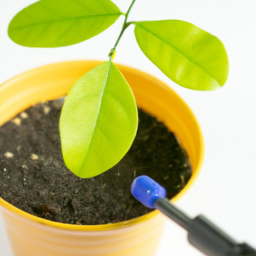
Integrated Pest Management: A Holistic Approach to Plant Pest Prevention and Treatment
Plant pests can wreak havoc on our gardens and crops, causing significant damage and reducing yields. To effectively combat these pests, it’s crucial to adopt a holistic approach known as Integrated Pest Management (IPM). This method combines various strategies to prevent and treat plant pest problems while minimizing the use of harmful chemicals. In this article, we will delve into the concept of IPM and provide you with a step-by-step guide to understanding and implementing this approach.
What is Integrated Pest Management?
Integrated Pest Management is an environmentally friendly and sustainable approach to managing plant pests. It focuses on preventing pest problems before they occur and utilizing a combination of biological, cultural, physical, and chemical control methods to manage pests effectively. The goal of IPM is to maintain pest populations at an acceptable level while minimizing the impact on beneficial organisms and the environment.
Implementing IPM involves careful monitoring and identification of pests, understanding their life cycles, and employing appropriate control measures at the right time. By taking a proactive and comprehensive approach, IPM reduces the reliance on pesticides and promotes long-term pest management strategies.
Now, let’s dive into the step-by-step guide to understanding and implementing Integrated Pest Management:
Step 1: Pest Identification and Monitoring
The first step in IPM is to identify the pests that are causing damage to your plants. This can be done through visual inspection, using traps, or consulting with local agricultural extension services. Once you have identified the pests, it’s important to monitor their population levels regularly. Monitoring helps you determine the severity of the infestation and the appropriate control measures to employ.
Regular monitoring can involve checking plants for signs of damage, inspecting leaves and stems for eggs or larvae, and using sticky traps to capture flying insects. By keeping a close eye on pest populations, you can intervene at the earliest signs of trouble, preventing further damage.
Step 2: Cultural Control Methods
Cultural control methods involve modifying the environment to discourage pests and promote plant health. This can include practices such as crop rotation, intercropping, proper irrigation, and maintaining healthy soil. By diversifying plant species and creating a balanced ecosystem, you can disrupt pest life cycles and reduce the risk of infestations.
Crop rotation is particularly effective in preventing the buildup of pest populations. By alternating crops each season, pests that are specific to certain plants will struggle to survive, as their host plants are not present. Intercropping, or planting different crops together, can also confuse pests and make it harder for them to find their preferred plants.
Step 3: Biological Control Methods
Biological control methods involve using natural enemies of pests to control their populations. This can include introducing beneficial insects, such as ladybugs or parasitic wasps, that feed on pests or their eggs. Additionally, certain nematodes, fungi, and bacteria can be used to target specific pests without harming beneficial organisms.
Encouraging biodiversity in your garden or farm is crucial for biological control. By providing habitat and food sources for beneficial insects and birds, you create a natural balance that helps keep pest populations in check. Avoiding the use of broad-spectrum pesticides is also essential, as these chemicals can harm both pests and beneficial organisms.
Step 4: Physical Control Methods
Physical control methods involve physically removing or excluding pests from plants. This can include techniques such as handpicking insects, using barriers like nets or fences, or employing traps to capture pests. Physical control methods are particularly useful for larger pests, such as rodents or birds, that can cause significant damage.
Handpicking pests can be time-consuming but effective, especially for larger insects like caterpillars or beetles. Installing barriers, such as nets or fences, can protect plants from birds or larger animals. Traps can be used to capture pests like slugs or snails, reducing their numbers without resorting to chemical pesticides.
Step 5: Chemical Control Methods
Chemical control methods should be the last resort in IPM and should only be used when other strategies have failed or when the pest population reaches a threshold that requires immediate action. When using chemical pesticides, it’s crucial to choose the least toxic option and follow label instructions carefully to minimize harm to the environment and non-target organisms.
Before resorting to chemical control, consider the potential risks and benefits. Is the pest causing significant damage that cannot be managed by other methods? Are there alternative pesticides with lower toxicity? By carefully weighing the pros and cons, you can make informed decisions that prioritize the long-term health of your plants and the environment.
In conclusion, Integrated Pest Management offers a holistic and sustainable approach to preventing and treating plant pests. By combining various control methods and prioritizing prevention, IPM reduces the reliance on chemical pesticides and promotes long-term pest management strategies. By following the steps outlined in this guide, you can effectively implement IPM and protect your plants from the damaging effects of pests.
Let’s wrap up what we learned
Plant pests can wreak havoc on our beloved gardens and plants, but understanding them is the first step in preventing and treating their infestations. These pests come in various forms, from insects like aphids and caterpillars to diseases caused by fungi and bacteria. By learning about their habits and behaviors, we can take proactive measures to protect our plants and keep them healthy.
Prevention is key when it comes to plant pests. One effective method is to create a diverse and balanced ecosystem in our gardens. By planting a variety of species, we can discourage pests from establishing themselves. Additionally, practicing good garden hygiene, such as removing dead or diseased plants, can help prevent the spread of pests. Regularly inspecting our plants for signs of infestation, like chewed leaves or wilting, allows us to catch the problem early on and take immediate action.
Let me leave you with some FAQs:
Q1: What are plant pests?
A1: Plant pests are organisms that cause harm or damage to plants, including insects, mites, fungi, bacteria, viruses, and weeds. They can affect plant health, growth, and productivity.
Q2: How do plant pests harm plants?
A2: Plant pests harm plants in various ways. Insects and mites feed on plant tissues, sucking sap or chewing leaves, which can weaken or kill the plant. Fungi, bacteria, and viruses cause diseases that can stunt growth, cause discoloration, or even lead to plant death. Weeds compete with plants for resources like water, nutrients, and sunlight.
Q3: How can I prevent plant pest infestations?
A3: To prevent plant pest infestations, you can take several measures. Start by selecting healthy plants and seeds from reputable sources. Maintain good plant hygiene by removing dead or diseased plant material promptly. Provide proper watering, fertilization, and sunlight to keep plants healthy and less susceptible to pests. Use physical barriers like nets or fences to keep pests away, and practice crop rotation to disrupt pest life cycles.
Q4: What are some organic methods for controlling plant pests?
A4: Organic methods for controlling plant pests include using natural predators or parasites that feed on pests, such as ladybugs for aphids or nematodes for soil-dwelling pests. You can also use insecticidal soaps, horticultural oils, or botanical insecticides derived from plants. Additionally, practicing companion planting, where certain plants repel pests or attract beneficial insects, can help control infestations.
Q5: Are chemical pesticides necessary to control plant pests?
A5: While chemical pesticides can be effective in controlling plant pests, they are not always necessary. It is recommended to explore non-chemical options first, as chemical pesticides may have negative impacts on beneficial insects, wildlife, and the environment. If chemical pesticides are used, follow the instructions carefully and choose products labeled for the specific pest you are targeting.
Q6: How can I identify plant pests?
A6: Identifying plant pests is crucial for effective treatment. You can identify pests by observing their physical characteristics, such as size, shape, color, and movement. Look for signs of damage on plants, like chewed leaves, wilting, discoloration, or distorted growth. You can also consult gardening resources, books, or online guides to help you identify specific pests.
Q7: Can plant pests be harmful to humans?
A7: While most plant pests primarily harm plants, some can have indirect effects on humans. For example, certain insects like mosquitoes or ticks can transmit diseases to humans. Additionally, some plant pests may cause allergies or skin irritations in susceptible individuals. It is important to take precautions when dealing with plant pests and use appropriate protective measures.
Q8: How do I treat plant pests on indoor plants?
A8: Treating plant pests on indoor plants often involves a combination of methods. Start by isolating infested plants to prevent pests from spreading. You can physically remove pests by hand or use a gentle stream of water to dislodge them. For severe infestations, consider using organic insecticides or insecticidal soaps specifically labeled for indoor use. Follow the product instructions carefully and repeat treatments as needed.
Q9: Can plant pests be controlled without harming beneficial insects?
A9: Yes, it is possible to control plant pests without harming beneficial insects. By using organic pest control methods, such as biological controls or targeted insecticides, you can selectively target pests while minimizing harm to beneficial insects. Additionally, practicing good garden management techniques, like providing diverse habitats and avoiding broad-spectrum pesticides, can help preserve beneficial insect populations.
Q10: What should I do if my plants are already infested with pests?
A10: If your plants are already infested with pests, act promptly to prevent further damage. Start by identifying the specific pest and its life cycle to determine the most effective treatment method. Depending on the severity of the infestation, you may need to use a combination of physical removal, organic controls, or, as a last resort, chemical pesticides. Regular monitoring and early intervention are key to managing plant pest infestations successfully.

James Wong is a renowned ethnobotanist, plant scientist, and local television presenter. With a passion for demystifying plant science, he is known for translating complex botanical concepts into practical advice for everyday plant enthusiasts. James’s expertise spans from traditional gardening to cutting-edge plant technologies, making his insights accessible and informative.


